Table of Contents
Spirulina is a plant that can regulate glucose, blood pressure and cholesterol. It alleviates inflammatory pain, has antioxidant properties and protects against heart, liver and kidney diseases. In addition, it supports the immune system, reduces the side effects of allergies, improves digestion and promotes brain function. Do you not believe this? Read the results of the scientific studies in our article confirming this.
Green-blue alga full of proteins and vitamins
Spirulina is a filamentous cyanobacteria and superfood that is commonly called blue-green alga. This is because of its distinctive colour. [1] Spirulina is grown in high pH saline or fresh water. It contains numerous vitamins – from A, B1, B2, B3, B6, B9, C to Vitamin E and is also characterized by a high proportion of proteins. These make up on average up to 60% of its total content. [2] [3] Imagine a dietary supplement with the ability to regulate glucose, blood pressure, cholesterol, alleviate inflammatory pain. Food that has antioxidant properties and protects against heart, liver and kidney diseases. It supports the immune system, reduces allergies, improves digestion and promotes healthy brain function. [4] All this can be done using this miraculous superfood.
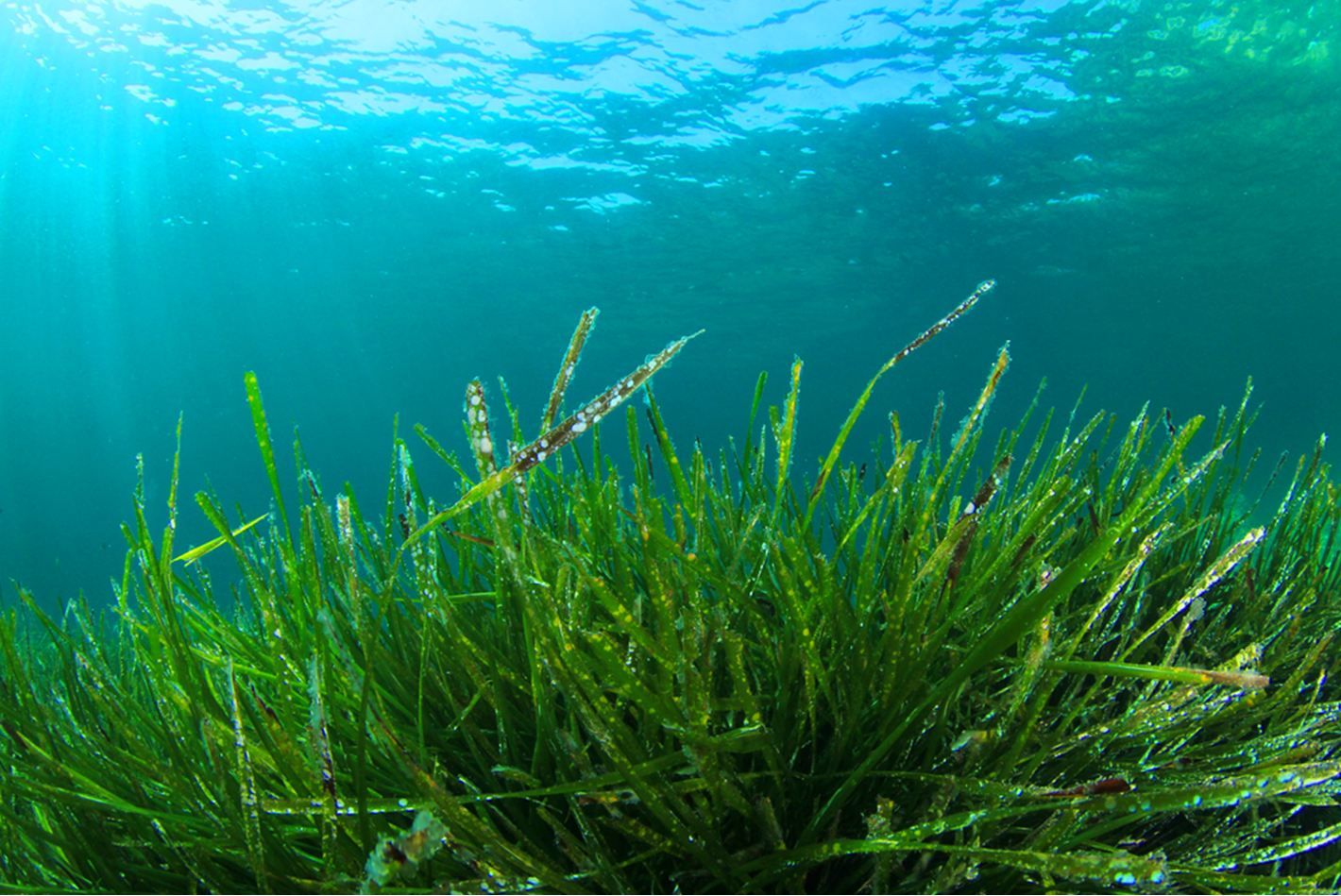
It supplies the body with even more proteins than nuts
The proportion of human usable protein is determined by amino acid quality, digestibility (proportion of protein absorbed in the intestines) and biological value (proportion of protein retained in the body). Dried eggs (94%) have the highest usable protein value compared to Spirulina, followed by milk, fish, chicken and beef. [7]
Spirulina vs other food
Comparing Spirulina to other foods shows us that this natural product is a very unique source of nutrients and vitamins. After all, a 3 g dose of Spirulina has a greater anti-inflammatory effect than five servings of fruit or vegetables a day. Hawaiian Spirulina has the highest nutritional content of all kinds of spirulina. For one gram of weight, Hawaiian Spirulina provides:
- 180% more calcium than whole-fat milk
- 100% more iron than spinach
- 100% more beta-carotene than carrots
- 670% more protein than tofu
- 31 times more phytonutrients than blueberries
- 60 times more phytonutrients than spinach
- 700 times more phytonutrients than apples [4]
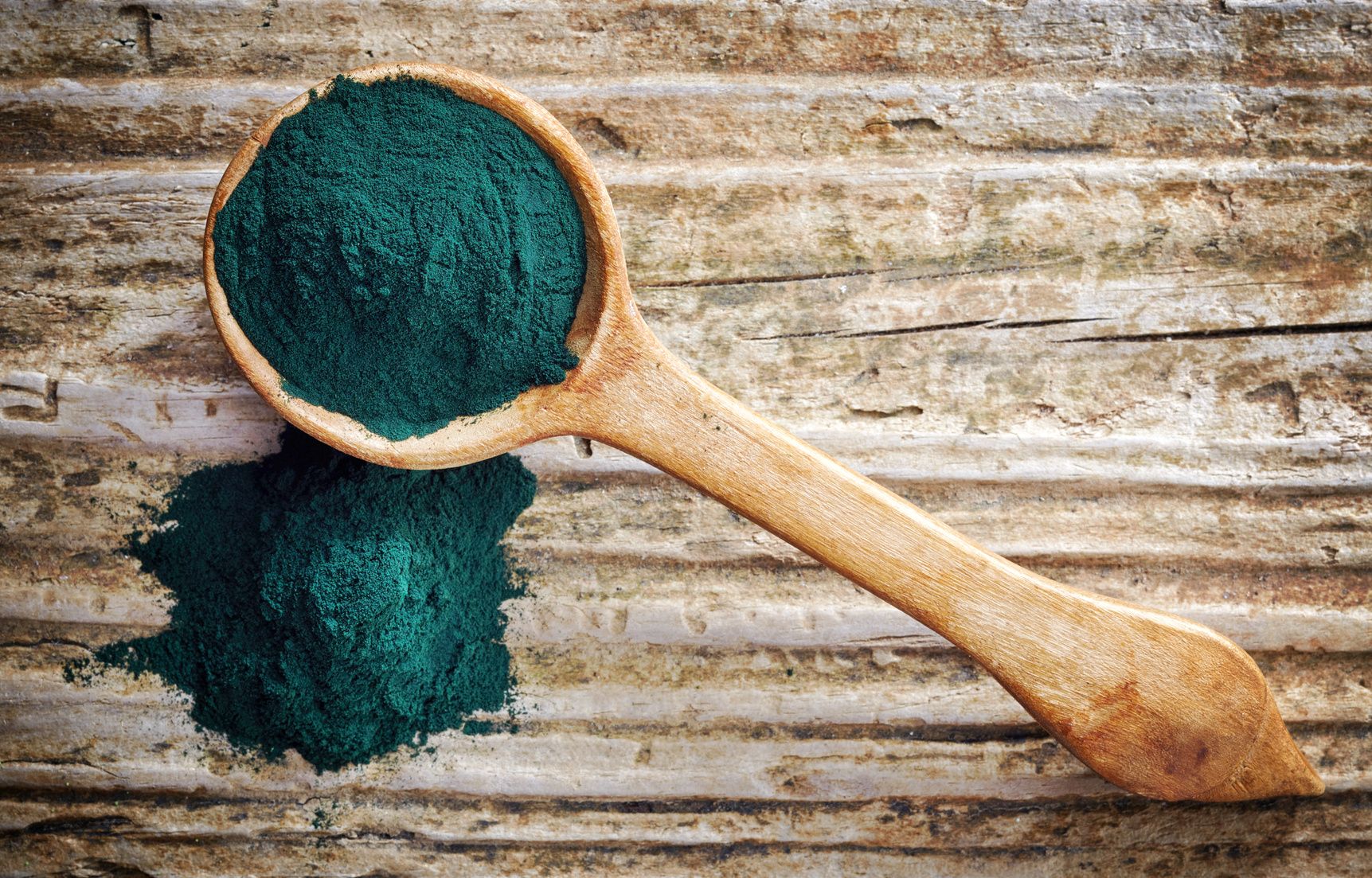
Health effects and benefits of Spirulina
1. Supports the treatment of yeast infection
Candida is a type of yeast that is a natural part of the intestinal and oral microflora. Their multiplication is mainly due to poor eating habits, such as high sugar intake. Spirulina may be the solution to the high increase in yeast infections. The results of several studies have confirmed that Spirulina eliminates yeast infection cells and promotes the growth of healthy bacterial flora in the intestines. [8] [9] [10] [11]
2. It works as cancer prevention
Phycocyanin is a source of blue-green alga coloration, but above all it is an ingredient with excellent antioxidant properties, thanks to which Spirulina prevents the spread of chronic inflammation and oxidative cell damage. These are phenomena that contribute to the spread of cancer. Phycocyanin helps fight free radicals and prevents the production of inflammatory signaling molecules. [12] [13] [14] [15]
3. Regulates high blood pressure
Elevated blood pressure is the driving force of heart attacks, strokes or kidney disease. In order to prevent these diseases, it is sufficient to consume 4.5 g of Spirulina. While 1 g yielded no results, an almost 5-gram dose can lower blood pressure and regulate it to an acceptable level. [16] [17]
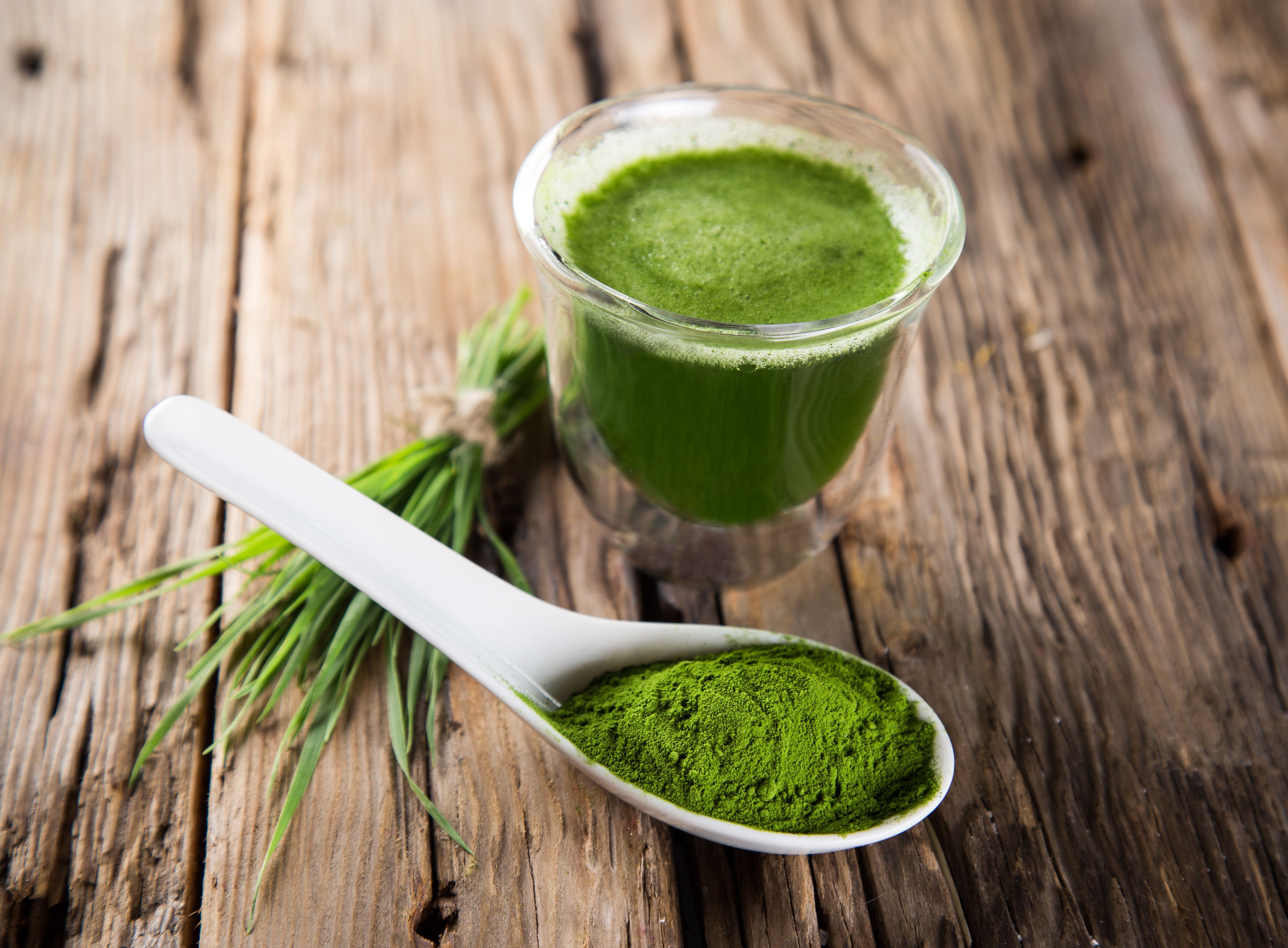
4. It can regulate blood sugar
Other scientific studies suggest that a 2 g dose of Spirulina is sufficient to significantly reduce high blood sugar levels in people with type 2 diabetes. This amount can regulate glucose levels from 9% to 8%, which at first glance may not seem much, but even such a change can reduce the risk of diabetes-related death by as much as 21%. [18] [19] In some cases, Spirulina even outperformed the known anti-diabetes medicines, such as Metformin. [20] [21] [22]
5. Increases physical strength and endurance
Some mineral-rich plant foods with antioxidant properties can reduce muscle damage in athletes and physically active people. One such food is Spirulina, which is able to significantly improve the endurance of a person, delay the feeling of fatigue and increase their physical strength. [23] [24] [25]
6. Relieves symptoms of allergic rhinitis
Spirulina can suppress rhinitis and any accompanying symptoms caused by allergies to pollen, fur or dust. According to a study involving 127 people, a 2 g daily dose of Spirulina is sufficient to relieve sneezing, nasal discharge and unpleasant itching. [26] [27]
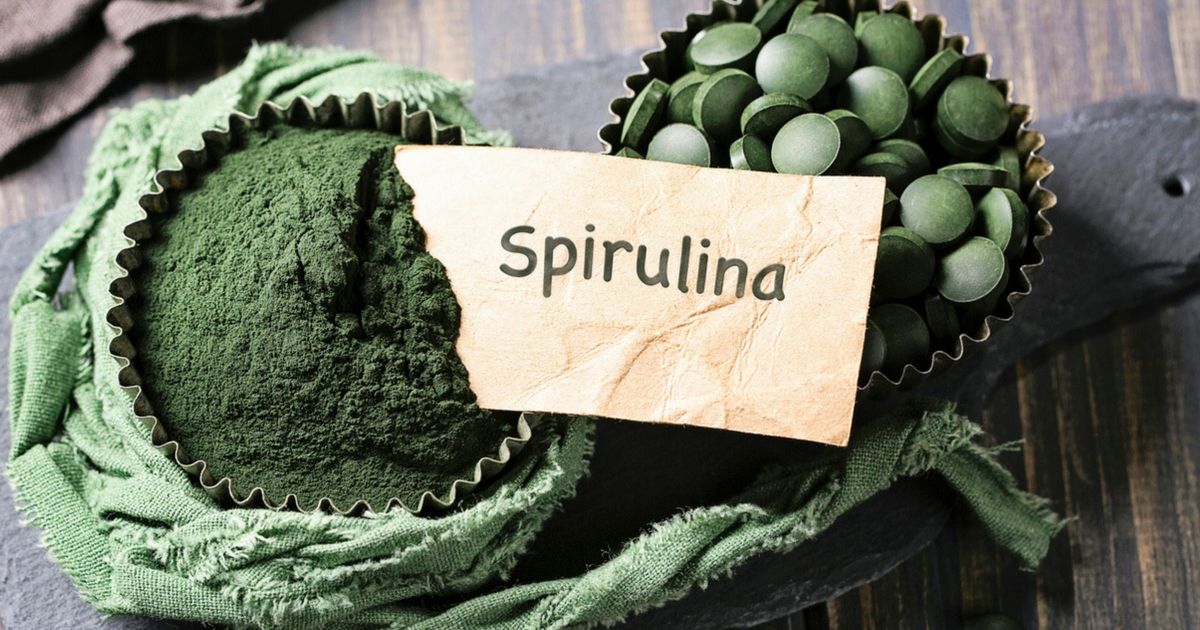
7. May be an effective remedy for anaemia
Anaemia is a disease that mainly affects older people, and one of its most common forms is characterized by a reduced amount of haemoglobin or red blood cells in the blood. The accompanying phenomenon of such a deficit is an intense feeling of fatigue and exhaustion. A 2011 study showed that after administration of Spirulina, the content of haemoglobin and red blood cells in seniors increased. During the 12-week study, there was an increase in MCV (mean cell volume of red blood cells), MCH (mean haemoglobin weight in the red blood cell) and MCHC (mean haemoglobin concentration in the red blood cell). [28] [29]
8. Reduces the risk of heart disease
Spirulina is able to reduce the levels of bad (LDL) cholesterol and triglycerin, and in some cases increase the amount of good (HDL) cholesterol. In people with high cholesterol levels, a decrease in triglycerin of 16.3% and LDL cholesterol of 10.1% was demonstrated after ingestion of 1 g of Spirulina. Studies in which higher daily doses of 4.5 to 8 g were used yielded even more favourable results. [30] [31] [32]
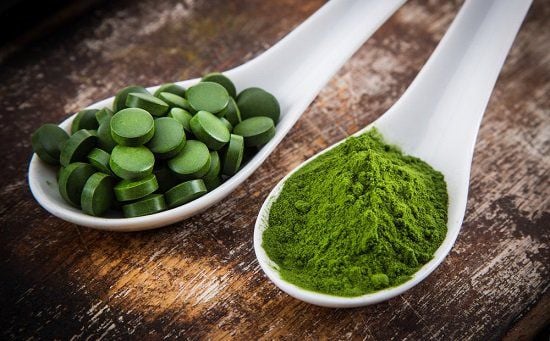
9. Helps to remove heavy metals
Spirulina contains a high content of chlorophyll, which strengthens the immune system and helps to remove toxins from the blood. According to a 2006 study, a 5 g daily dose of Spirulina in combination with zinc supplementation can reduce the amount of toxic arsenic in the body by almost half. There are assumptions that Spirulina is also able to bind with radioactive isotopes, which makes it also useful in radiotherapy. [33]
10. It has anti-inflammatory effects
Gamma-linolenic acid belongs to the group of essential fatty acids and has highly effective anti-inflammatory properties. GLA is a substance that the human body cannot produce itself and is dependent on its intake from other sources. One of the plant foods where GLA acid is found is, for example, Spirulina. Gamma-linolenic acid affects the quality of hair, nails and skin. It also positively affects premenstrual syndrome and affects healthy joint function. [34] [35]
Spirulina vs. Chlorella
Although they are very similar, the only thing that have common is the same plant species. [36]
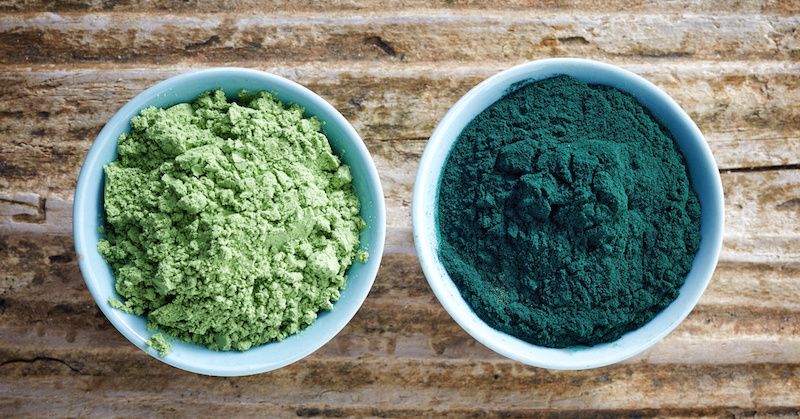
- Chlorella is a green unicellular alga with a core
- Spirulina is a blue-green, multicellular cyanobacteria without a core
- Spirulina can reach up to 100 times the size of Chlorella
- while Chlorella has a round shape, Spirulina is spiral
- both of these plants are good sources of nucleic acids, but Chlorella contains almost twice as much as Spirulina per gram
- Chlorella has a hard and indigestible wall and therefore requires additional mechanical treatment before consumption. This process is also reflected in the resulting Chlorella price, which is more expensive than Spirulina
- Spirulina has a digestible wall
- Spirulina and Chlorella also differ in nutrient content – Spirulina has more essential amino acids, iron, protein, vitamin B, C, D and E
- Chlorella does not have as much iron, protein and gamma-linolenic acid as Spirulina
- Chlorella contains almost twice the amount of chlorophyll compared to Spirulina
Side effects of Spirulina
Make sure you buy only the highest quality Spirulina from the seller. Spirulina from dirty and contaminated water can cause abdominal pain, nausea, vomiting, liver damage, or heart palpitations. Pregnant and breast-feeding women should only consume Spirulina after consulting a doctor. Even people with autoimmune diseases should consult their doctor before consuming Spirulina. [37]
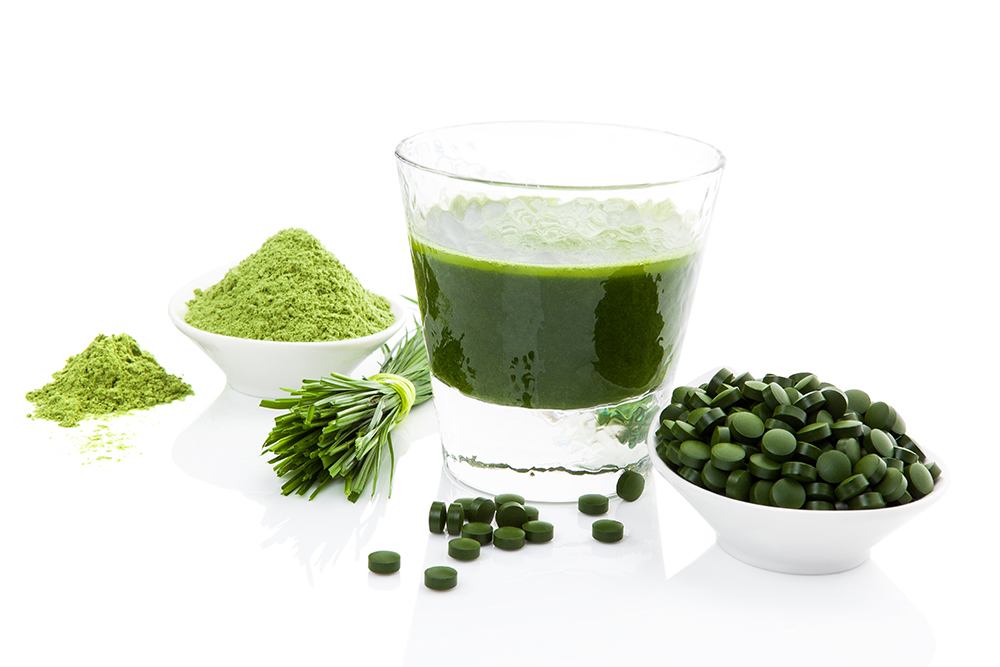
How to consume Spirulina?
Every newcomer should start consuming this alga in successive doses. While Spirulina tablets can be swallowed with water or eaten with bananas, Spirulina powder can be consumed in many ways. It can be mixed into fruit drinks, smoothies or various meals.
Fruit Smoothie with Spirulina
- 1 ripe banana
- 1 teaspoon of Chia seeds
- 1 cup of frozen blueberries
- 1 cup borecole
- 1 cup of spinach
- 1 scoop of vanilla protein
- 1 teaspoon of Spirulina
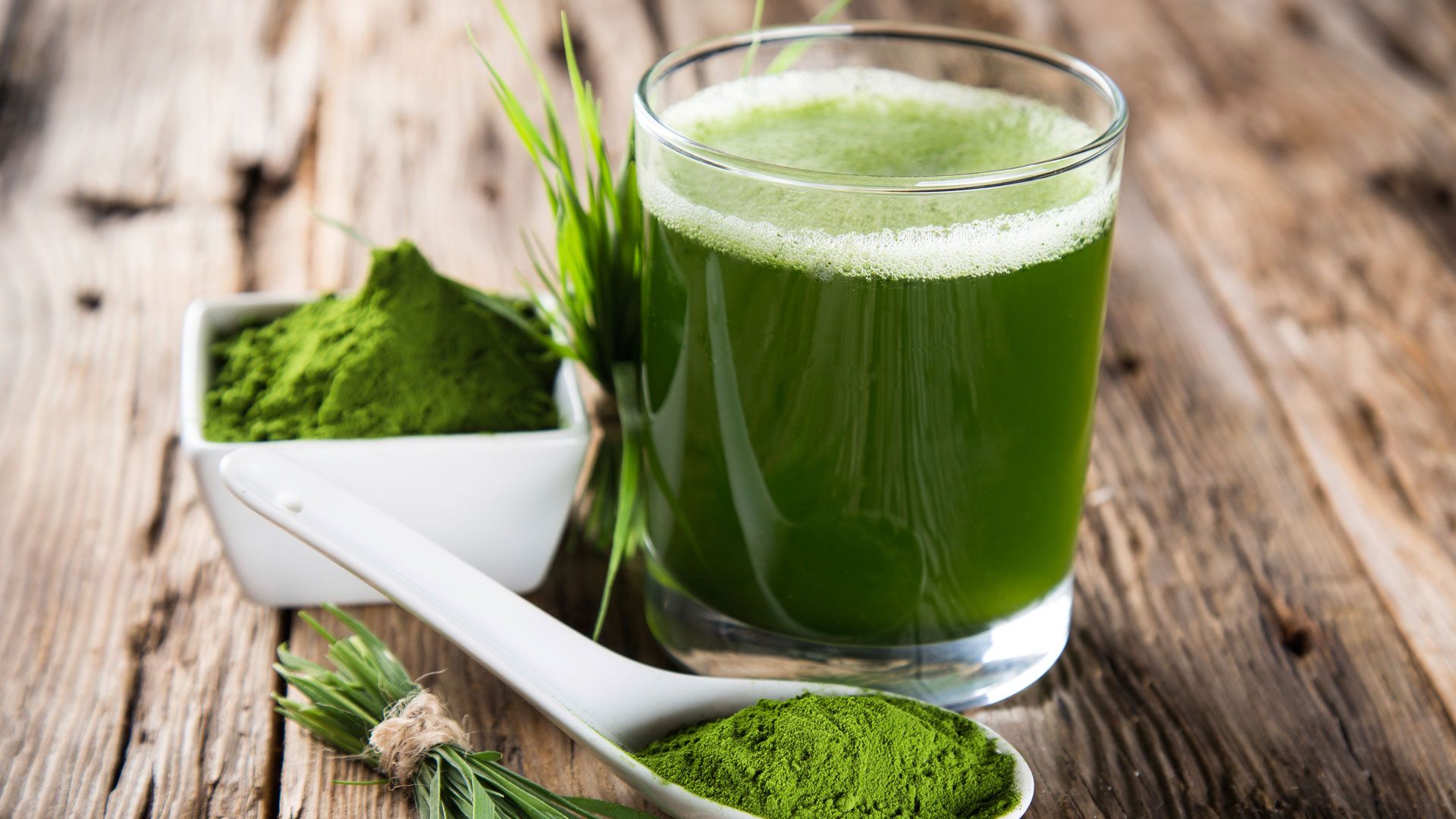
Spirulina with Aloe Vera
- 1/4 cup of Aloe Vera juice
- 1 teaspoon of flax seeds
- 1/2 cup of Greek yogurt
- 2 teaspoons of honey
- 6 frozen strawberries
- 1/4 cup with spinach leaves
- 1 teaspoon of Spirulina
- 3/4 cups of water
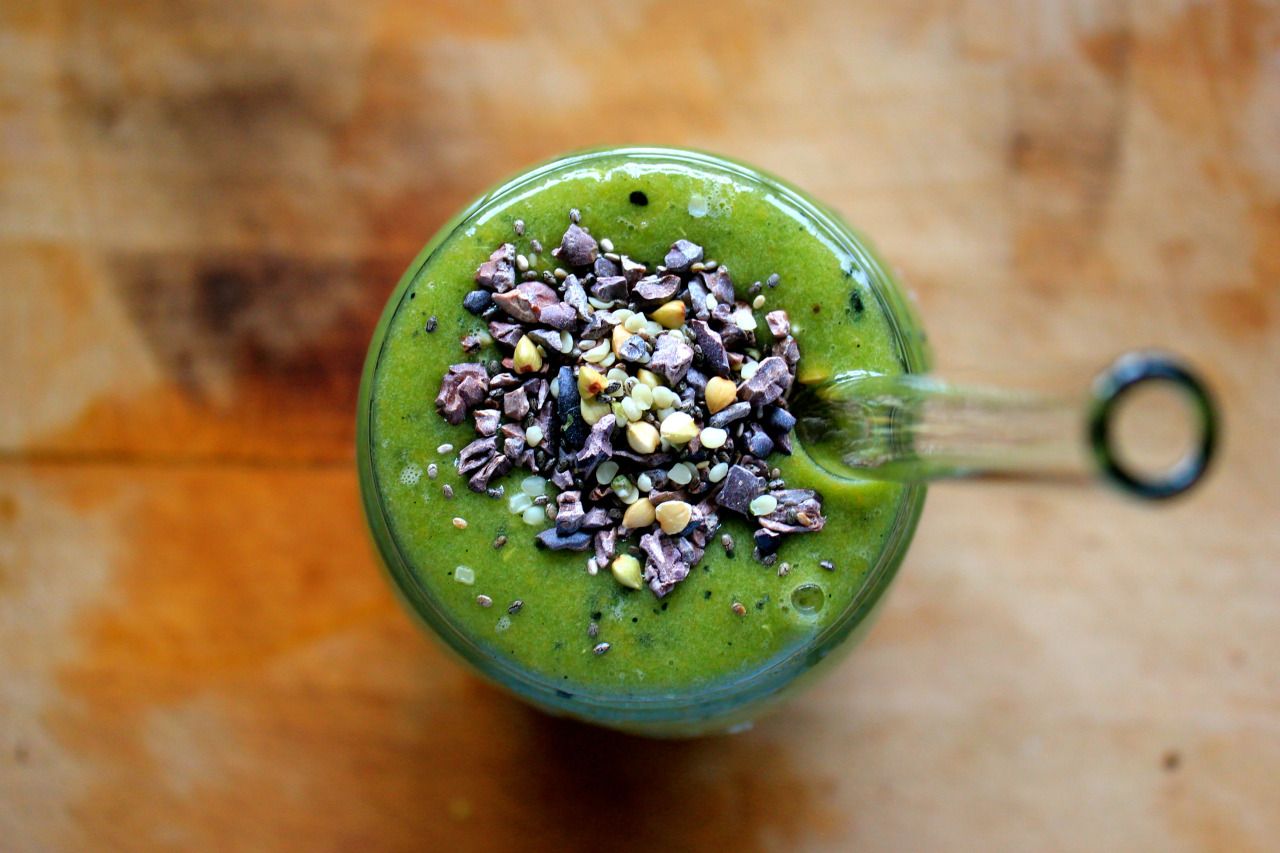
Spirulina Chips
- 6 potatoes cut into thin slices
- 2 teaspoons of pepper
- 2 teaspoons of garlic powder
- 2 teaspoons of Spirulina
- 1 teaspoon of caraway seeds
- 2 tablespoons of complex amino acids
Place potatoes in a preheated oven at 350 ° C and bake for 10 minutes. Remove and allow to cool for about 5 minutes. Mix all the spices together and sprinkle the mixture on the potatoes. Sprinkled potatoes then bake for another 30 minutes.
History
Algae are attributed several primacies. They were one of the first forms of life on Earth, and it is said that they were one of the first natural foods. In terms of oxygen production, algae also lead in this area. It is estimated that up to 70% of total oxygen production is produced by algae. Spirulina was used as a food source among the natives of Mexico and Africa. Written records from 1524 refer to the Aztecs living in the Texcoco Lake area who consumed the tecuitlatl blue-green cake. Other sources say that Spirulina was one of the ingredients of their favourite bread, along with grain, tomatoes, peppers and spices. [38]
Until recently, Spirulina has been a major source of protein for people living in Lake Chad in Africa. The inhabitants had a very sophisticated way of obtaining algae. Spirulina arrived on the shore of the lake with the help of wind and waves, excess water was absorbed by sand, and the algae on the shore was dried up by the hot sun. This naturally processed Spirulina is called dih’e in the local language and makes up 70% of the dishes. [38]

The first commercial sale of Spirulina as a nutritional supplement was launched in the US in 1979. Interestingly, Spirulina was initially considered a waste because it prevented the continuous production of soda. Effects on body weight have caused a rapid increase in popularity among the general public, and so Spirulina has become a desirable product of healthy nutrition, which remains to this day. [38]
It is up to you whether you decide to try Spirulina and give her the opportunity to show off only in the best light. If you have already tried it or use it regularly, please share your experience with us in the comments. If you liked the article, or think it might be helpful to your friends, please share it.
Sources:
[1] Hongsthong, A., a kol. Revealing differentially expressed proteins in two morphological forms of Spirulina platensis by proteomic analysis. 2007.https://www.ncbi.nlm.nih.gov/pubmed/17914191
[2] Kalina, T., Váňa, J. Cyanobacteria, algae, fungi, bryophytes and similar organisms in contemporary biology. 2005. ISBN 80-246-1036-1.
[3] Khan, Z., Bhadouria, P., Bisen, P., S. Nutritional and therapeutic potential of Spirulina. 2005.https://www.ncbi.nlm.nih.gov/pubmed/16248810
[4] Moorhead, K., Capelli, B. Spirulina: Nature’s Superfood. 2012. ISBN 0-9637511-3-1.https://www.superfood-eshop.sk/images/Certifikaty/Spirulina_Nature’s_Superfood.pdf
[5] Self Nutrilion Dats. Spirulin Nutrition Facts & Calories.https://nutritiondata.self.com/facts/vegetables-and-vegetable-products/2765/2
[6] United States Department of Agriculture. Seaweed, spirulina, dried. Agricultural Research Service. National Nutrient Database for Standard Reference, release 28.https://ndb.nal.usda.gov/ndb/foods/show/3306
[7] Henrikson, R. Spirulina – World Food. 2010. ISBN 1453766987.https://www.superfood-eshop.sk/images/Certifikaty/Spirulina_World_Food.pdf
[9] Soltani, M., Khosravi, A., R., Asadi, F., Shokri, H. Evaluation of protective efficacy of Spirulina platensis in Balb/C mice with candidiasis. 2012.https://www.ncbi.nlm.nih.gov/pubmed/23518167
[10] El-Sheekh, M., M., a kol. Efficacy of Rhodotorula glutinis and Spirulina platensis carotenoids in immunopotentiation of mice infected with Candida albicans SC5314 and Pseudomonas aeruginosa 35. 2010.https://www.ncbi.nlm.nih.gov/pubmed/20336506
[11] Ozdemir, G., a kol. Antibacterial activity of volatile component and various extracts of Spirulina platensis. 2004.https://www.ncbi.nlm.nih.gov/pubmed/15478198
[12] Reuter, S., a kol. Oxidative stress, inflammation, and cancer: How are they linked? 2010.https://www.sciencedirect.com/science/article/pii/S0891584910005381
[13] Shih, C., M., a kol. Antiinflammatory and antihyperalgesic activity of C-phycocyanin. 2009.https://www.ncbi.nlm.nih.gov/pubmed/19299804
[14] Farooq, S., M., a kol. C-phycocyanin confers protection against oxalate-mediated oxidative stress and mitochondrial dysfunctions in MDCK cells. 2014.https://www.ncbi.nlm.nih.gov/pubmed/24691130
[15] Romay, Ch., a kol. C-phycocyanin: A biliprotein with antioxidant, anti-inflammatory and neuroprotective effects. 2003.https://www.ncbi.nlm.nih.gov/pubmed/12769719
[16] Mazokopakis, E., E., a kol. The hypolipidaemic effects of Spirulina (Arthrospira platensis) supplementation in a Cretan population: A prospective study. 2014.https://www.ncbi.nlm.nih.gov/pubmed/23754631
[17] Torres-Duran, V., P., a kol. Antihyperlipemic and antihypertensive effects of Spirulina maxima in an open sample of mexican population: a preliminary report. 2007.https://www.ncbi.nlm.nih.gov/pmc/articles/PMC2211748/
[18] Parikh, P., Mani, U., Iyer, U., Role of Spirulina in the Control of Glycemia and Lipidemia in Type 2 Diabetes Mellitus. 2001.https://www.ncbi.nlm.nih.gov/pubmed/12639401
[19] BMJ. Association of glycaemia with macrovascular and microvascular complications of type 2 diabetes (UKPDS 35): prospective observational study. 2000.https://www.bmj.com/content/321/7258/405
[20] Jarouliya, U., a kol. Alleviation of metabolic abnormalities induced by excessive fructose administration in Wistar rats by Spirulina maxima. 2012.https://www.ncbi.nlm.nih.gov/pubmed/22561632
[21] Ou, Y., Lin, L., Yang, X., Pan, Q., Cheng, X. Antidiabetic potential of phycocyanin: effects on KKAy mice. 2013.https://www.ncbi.nlm.nih.gov/pubmed/23368938
[22] Ou, Y., Lin, L., Yang, X., Pan, Q., Cheng, X. Preventive effect of phycocyanin from Spirulina platensis on alloxan-injured mice. 2012.https://www.ncbi.nlm.nih.gov/pubmed/23121873
[23] Kalafati, M., a kol. Ergogenic and antioxidant effects of spirulina supplementation in humans. 2010.https://www.ncbi.nlm.nih.gov/pubmed/20010119
[24] Lu, H., K., a kol. Preventive effects of Spirulina platensis on skeletal muscle damage under exercise-induced oxidative stress. 2006.https://www.ncbi.nlm.nih.gov/pubmed/16944194
[25] Sandhu, J., Shenoy, S. Efficacy of Spirulina Supplementation on Isometric Strength and Isometric Endurance of Quadriceps in Trained and Untrained Individuals – a comparative study. 2010.https://journals.sfu.ca/ijmbs/index.php/ijmbs/article/viewArticle/51
[26] Sayin, I., a kol. Complementary therapies in allergic rhinitis. 2013.https://www.ncbi.nlm.nih.gov/pubmed/24324897
[27] Cingi, C., a kol. The effects of spirulina on allergic rhinitis. 2008.https://www.ncbi.nlm.nih.gov/pubmed/18343939
[28] Carmel, R. Nutritional anemias and the elderly. 2008.https://www.ncbi.nlm.nih.gov/pubmed/18809092/
[29] Selmi, C., a kol. The effects of Spirulina on anemia and immune function in senior citizens. 2011.https://www.ncbi.nlm.nih.gov/pmc/articles/PMC4012879/
[30] Mazokopakis, E., E., a kol. The hypolipidaemic effects of Spirulina (Arthrospira platensis) supplementation in a Cretan population: a prospective study. 2014.https://www.ncbi.nlm.nih.gov/pubmed/23754631
[31] Torres-Duran, V., T., a kol. Antihyperlipemic and antihypertensive effects of Spirulina maxima in an open sample of mexican population: a preliminary report. 2007.https://www.ncbi.nlm.nih.gov/pmc/articles/PMC2211748/
[32] Park, H., J., a kol. A randomized double-blind, placebo-controlled study to establish the effects of spirulina in elderly Koreans. 2008.https://www.ncbi.nlm.nih.gov/pubmed/18714150
[33] Misbahuddin, M., a kol. Efficacy of spirulina extract plus zinc in patients of chronic arsenic poisoning: a randomized placebo-controlled study. 2006.https://www.ncbi.nlm.nih.gov/pubmed/16615668
[34] University of Maryland Medical Center. Gamma – linolenic acid.https://umm.edu/health/medical/altmed/supplement/gammalinolenic-acid
[35] Jun, D. Kyselina gama-linolenová (GLA). 2007.https://www.ordinace.cz/clanek/kyselina-gama-linolenova-gla/
[36] Nutrex Hawai. How does Spirulina differ from Chlorella and other blue-green algae?https://www.nutrex-hawaii.com/how-does-spirulina-differ-from-chlorella-and-other-blue-green-algae
[37] WebMD. Blue – green algae.https://www.webmd.com/vitamins-supplements/ingredientmono-923-spirulina%20(blue-green%20algae).aspx?activeingredientid=923&activeingredientname=spirulina%20(blue-green%20algae)
[38] Tietze, H. Spirulina Micro Food Macro Blessings. 1999.https://books.google.sk/books?id=qXxF8Wal0LIC

